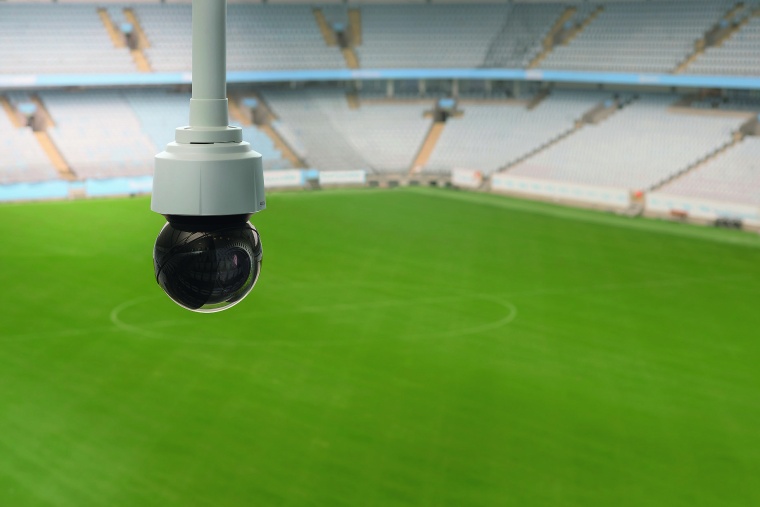Returning Sports Fans to Stadiums Safely with Smart Technology
The atmosphere of being in a sports stadium is often as important as the event itself, if not more. The pandemic forced fans to abandon venues and watch sports events from their sofas at home. There is now hope for a return to normality as several countries around the world have re-opened their stadiums at varied capacities. Accordingly, many fans are eager to return to the stands for upcoming football seasons. However, in many cases, significant changes are required to ensure the health and safety of fans. Smart technologies like network cameras, smartphones and analytics are helping to ensure safety and security while also improving stadium operations and enhancing fan experience.

For many fans, the pre-match picnic in the car park is a big part of the game day experience. However, left unmanaged, this can easily turn into an overcrowded gathering. Network surveillance cameras can give security a comprehensive view of the car park. With the addition of video and audio analytics and speaker horns, security can be alerted when a party grows beyond a point considered safe. Staff would then have the option to physically intervene or broadcast a warning to revellers before the event gets out of hand.
Smartphone and Surveillance Solutions
A lot of stadiums were switching from paper tickets to e-ticketing even before the pandemic, as it saved them the cost of printing and mailing fans their tickets. Scanning a fan’s smartphone is far more sanitary than exchanging bits of paper at the gate because it reduces the need for physical exchanges.
Smartphones can also be used to help stage entry times into the stadium. Instead of the traditional stampede when the gates open, stadiums can notify fans through a smartphone app when it is their turn to queue at a specific gate. Video cameras can play a role in maintaining social distancing by monitoring each entrance. Adding queue management analytics will enable bottlenecks to be addressed at the entrance in real-time and automatically alert staff when they need to move some fans to a less congested gate.
Health and Safety Inside the Stadium
To keep fans and staff protected, stadiums can shift to touchless, cashless operations. Stadiums can adopt their own version of ‘click and collect’ to avoid crowded concourses for when fans line up to purchase food and souvenirs. Resultantly, instead of congregating to eat on the concourse, fans can place and pay for their orders through their smartphones and then be notified when they are ready for pickup. Once they pick up their order, the new norm will be to return to their seats to eat.
To further minimize the opportunity for virus transmission, stadiums can retrofit bathrooms with touchless door controls, faucets, and towel dispensers. To ensure safe social distancing, video analytics and network speakers can also be used to track and limit how many people can be in a bathroom at a time.
In the VIP lounges and bars, occupancy management analytics can be used to enforce assembly limits dictated by local guidelines. If a gathering crowd reaches a threshold, stadium personnel will automatically receive an alert to disperse the group into smaller, socially distant parties.
Surveillance Technology for Exiting
If the home team is losing the game or it is such a one-sided match that the ending result is inevitable, fans are likely to exit early to beat the traffic. During this point audio communication can be used to manage the movement of the crowds and keep everyone informed. Network video surveillance cameras can monitor the behaviour of fans and alert if any violent behaviour is taking place.
Stadiums are exploring strategies that will allow them to maintain health and safety standards without feeling too restrictive to fans. It may take quite a bit of trial and error until a workable solution is reached but smart technology solutions can help.
Smartphones and surveillance technology play a key role in ensuring the safety of fans during the football seasons. The technology can impact safeguarding from the point of arriving at the stadium, all the way through to the end of the event when fans exit. As more stadiums reopen their doors to the public and their capacities increase, it is crucial that people’s health and safety is a primary concern.
Author:
Mark McCormack, National Sales Manager of Global and National Accounts at Axis Communications












